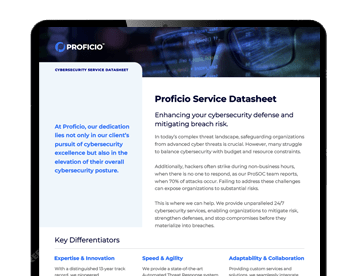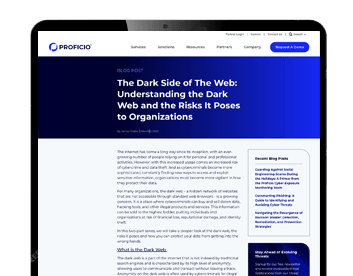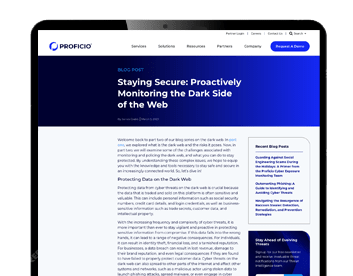Proficio® Cyber Exposure Monitoring (CEM) service takes external exposure detection further for complete visibility and threat protection.
By combining Digital Risk Monitoring (DRM), External Attack Surface Management (EASM), and Dark Web Monitoring, Proficio® provides continuous external threat monitoring that enables real-time visibility into confidential data exposure, compromised credentials, leaked data on the Dark Web, Deep Web and more. By uncovering external threats, you gain the insight needed to understand and improve your security posture as well as preemptively respond to emerging external cyber threats before they take root.
Safeguarding customer and employee data is a business imperative. Proactive measures are crucial to mitigate the risk of exposure on the Dark Web. Proficio’s CEM service monitors the Dark Web’s depths for leaked information. With CEM, businesses can confidently ensure the protection of sensitive data, reinforcing their commitment to privacy and security.
Proficio’s CEM lifecycle involves five stages: identify assets, detect vulnerabilities, analyze and prioritize risks, remediate issues, and measure success. This continuous process culminates in an insightful report for informed decision-making.



“
Proficio provides far more protection from threats than we could achieve in any other way and that leads to peace of mind.
Jeff Allport,
CIO,
Valley Presbyterian Hospital
Sign up for our free newsletter and receive invaluable threat notifications from our Threat Intelligence team
By submitting this form, you agree to the Proficio Website Terms of Use and the Proficio Privacy Policy.
© 2025 Proficio. All Rights Reserved. Privacy Notice & Cookie Policy | Terms of Use